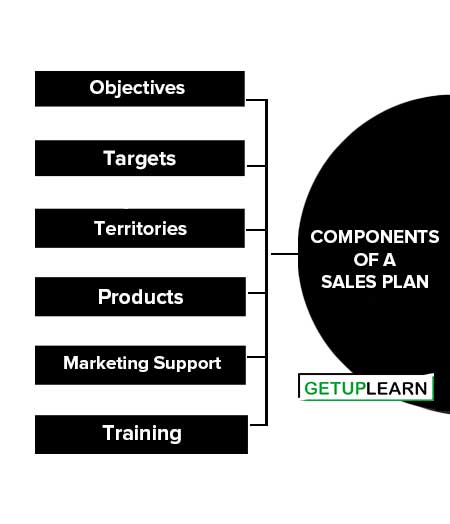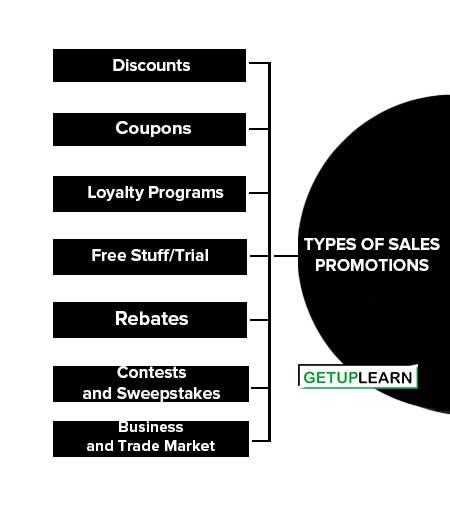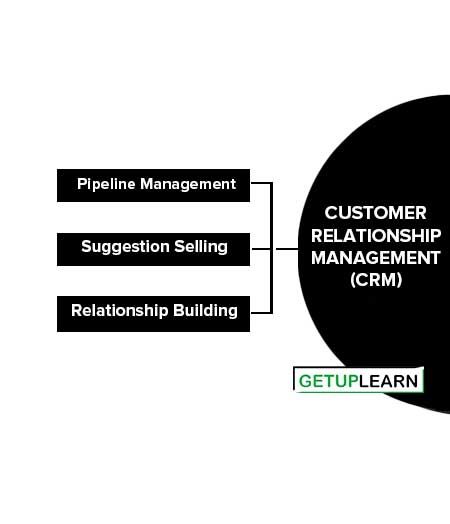A sales plan sets the direction, objectives, and expectations for the sales force.
Table of Contents
Components of a Sales Plan
The following are the key components of a sales plan:

Objectives
The sales plan sets objectives for the sales force. If a company wants to increase revenue and profit, it can either focus on winning new customers or expanding the business with existing customers.
The plan must give the preferred strategy for growth and assign responsibility for developing new or existing businesses to different members of the team. The plan must also identify any competitive threats to existing businesses so the sales team can act to protect vulnerable accounts.
Targets
A sales plan sets targets and quotas for individuals and the team. The targets must be specific, such as increasing revenue by 5 percent. Sales plans also include quotas for sales activities, such as making 50 new business phone calls each week, visiting six customers per week, or making presentations to three prospects per week.
Territories
For companies that structure their sales force geographically, the sales plan allocates territories to each representative and sets objectives for each territory.
Companies that have strengths in specific markets, such as engineering, financial services or health care, etc., may structure their sales force according to the market sector, appointing representatives with specialized knowledge to deal with key accounts.
Products
The sales plan describes the targets for sales of specific products and outlines any product-related incentives available to the sales force. The plan also provides details of new products that the company aims to launch in the next financial year and indicates the type of customers and prospects they may appeal to.
Marketing Support
The plan outlines how marketing activities are going to support the sales force objectives. An advertising campaign, for example, can generate leads for the sales force to follow up.
Training
To ensure that the sales force has the skills to meet its objectives, the sales plan should include information on training programs that are available.
If a company is planning to enter new market sectors or launch new products, training programs should cover essential market and product knowledge. If the company wants to increase business from existing customers, it should offer training in customer relationship management.
What are Sales Promotions?
Sales promotions are a common component of a company’s promotional strategy. Sales promotions involve a wide variety of sales strategies, including contests, product giveaways, catalogs, coupons, discounts and more. Marketing events, such as trade shows, also fall under the category of sales promotions. Sales promotions often target either consumers or wholesalers and retailers.
These are short-term strategies that ‘pull’ shoppers with incentives to ‘buy now’. A major trait of sales promotions is their short-term orientation. The purpose is to attract customers and create higher levels of sales than would be achieved at regular price points. In comparison, long-term brand advertising is used to gradually generate a sense of worth for the company’s products.
Companies use sales promotions for a variety of reasons to attract a new customer base; disrupt competitor promotions, increase revenue and cash flow quickly, and clear out excess inventory. Sales promotion strategies and tactics should be carefully planned, along with advertising and other promotional efforts.
Overuse of sales promotions instills a low-price orientation in customers, making it difficult to ever get them to pay a higher price. One also suffers missed revenue and profit if those products are discounted that customers would pay regular prices for in the near future. Additionally, errors in marking down prices or in signage, as well as confusing the details of deals, can alienate customers.
Types of Sales Promotions
A few types of Sales Promotion tools are discussed below:
- Discounts
- Coupons
- Loyalty Programs
- Free Stuff/Trial
- Rebates
- Contests and Sweepstakes
- Business and Trade Market

Discounts
The most simple sales promotion format is a percentage or rupee-off discount. The offer may be a product for something like 20 percent off or Rs. 10 off the original price.
A customer may perceive the product as more worthwhile at the reduced price. The use of eye-catching colors on the shelves to clearly designate a product as on sale can psychologically convey a better deal.
Coupons
Coupons are similar to discounts in that a customer is offered a reduced price for redeeming the coupon. The biggest difference is that only coupon holders have access to the discount opportunity.
This particular promotional tool is most useful when you have a large base of customers willing to pay a premium regular price, yet you also want to attract customers who are more price-sensitive with a coupon. This tool is also used to motivate a customer to try your product or switch from another brand.
Loyalty Programs
Loyalty or frequency programs are a very unique type of sales promotion in that they have a long-term focus. Loyalty programs are ongoing incentives to loyal customers who purchase at certain levels. Typically, customers receive points or bonus coupons when they reach certain spending increments.
Free Stuff/Trial
A number of sales promotional programs include a mix of free promotional inducements. One type is a product premium. This is where you get a free gift or additional item with a purchase.
Buying a pack of coffee and getting a coffee mug free is an example. Free product samples and trial offers are used to take the risk out of trying a new product. These garner exposure for the product or service.
Rebates
Rebates are a unique promotional tool where a customer receives a check or payment from a manufacturer or reseller after a purchase. Electronics retailers, for instance, often offer big-ticket items that come up with manufacturer or retailer rebates.
Normally, you have to submit a receipt and application, and the rebate takes several weeks to process and payout. Redemption rates overall are low, because customers don’t always redeem small offers.
Contests and Sweepstakes
These are the prize giveaways used to build the interest of customers regarding any product or service.
Business and Trade Market
Business and trade market promotions are deals offered to business buyers and trade resellers. Businesses receive many of the same types of promotional offers as consumers with the objective of luring them into buying.
Trade resellers are offered promotional incentives so manufacturers and wholesalers can get their immediate customers to buy and carry products. Simple discounts, promotional allowances, and refunds are examples of trade promotions.
Customer Relationship Management (CRM)
CRM refers to the study of the needs and expectations of the customers and providing them with the right solution. CRM originated in the early 1970s. Customer relationship management, or CRM, is a systematic approach to marketing that relies on database technology for more targeted marketing and effective sales and service. From a sales perspective, sales companies and employees use CRM for the following:

Pipeline Management
This is sequential status updates on leads as they move from prospects to customers. During the sales process, a prospect’s status commonly moves from lead to initial contact, to presentation, to sale, and finally, to follow-up. Salespeople normally can create reports that show what customers are in each stage at any given point.
Suggestion Selling
Part of the point of CRM is to enable salespeople to get more business from top customers. They do this by identifying those customers that purchase significant amounts consistently.
Customer profiles and recommendation tools help salespeople know when to offer additional products, accessories, and services related to a single purchase, and when to recommend unrelated purchases to a key buyer.
Relationship Building
Salespeople want to build long-term relationships with customers that allow for ongoing and building business over time. They also can optimize relationships by asking for referral business.
Benefits of CRM
Discussed below are a few benefits of CRM for various activities or departments:
Sales Department
Improved sales planning and management, automating the lead system, managing sales opportunities effectively, streamlining account management, boosting sales productivity, enhancing sales pipeline management, simplifying workflow processes, mobility in accessing real-time customer data, and analytics for improved decision making.
Customer Care
Improved account handling, managing customer cases efficiently, simplifying contract management, knowledge management(storing staff experiences as a repository), streamlining schedules, automating workflows, mobility features for data, and analytics for customer service.
Marketing Department
Streamlining campaign planning, managing events efficiently, improved response management, automating workflows, analytics for marketing, instantly segmenting prospects, managing data effectively, and being user-friendly.
FAQs About the Sales Plan and Promotion
What are the components of a sales plan?
The components of a sales plan are 1. Objectives 2. Targets 3. Territories 4. Products 5. Marketing Support 6. Training.
What are the types of sales promotions?
These are the types of sales promotions:
1. Discounts
2. Coupons
3. Loyalty Programs
4. Free Stuff/Trial
5. Rebates
6. Contests and Sweepstakes
7. Business and Trade Market.

